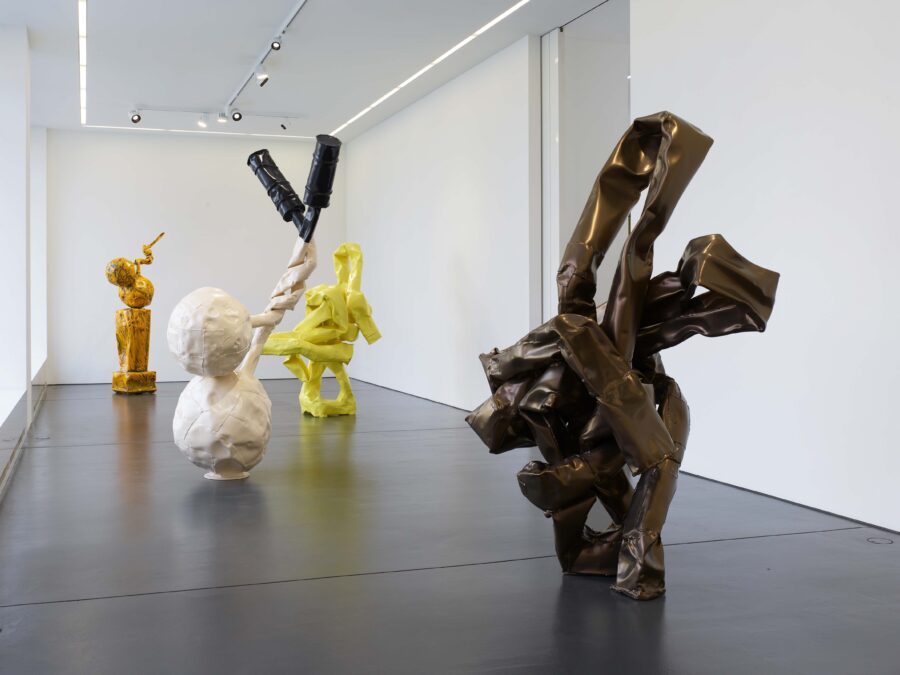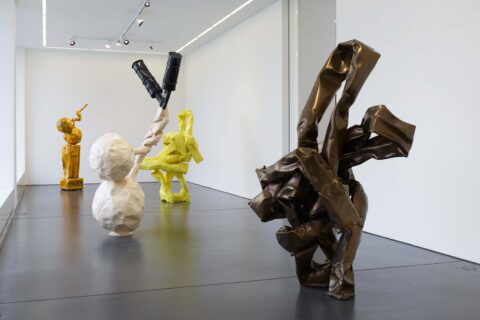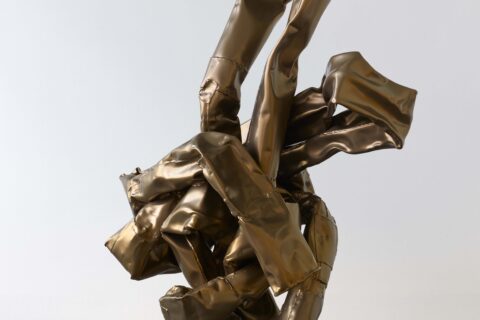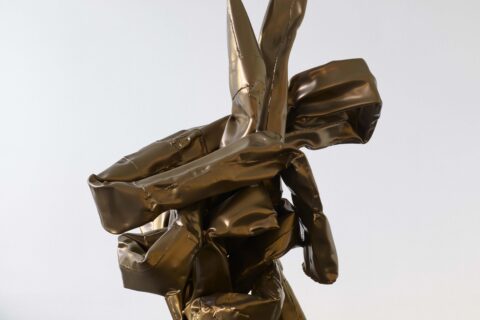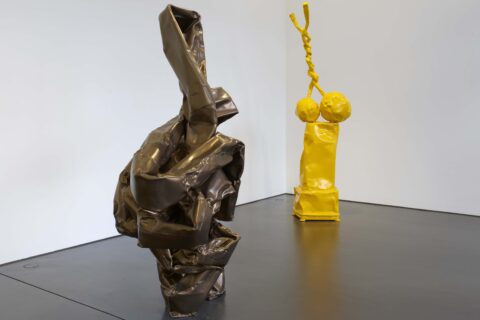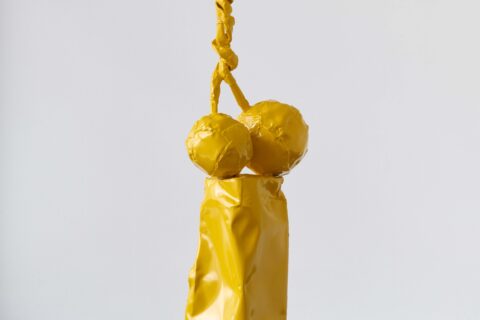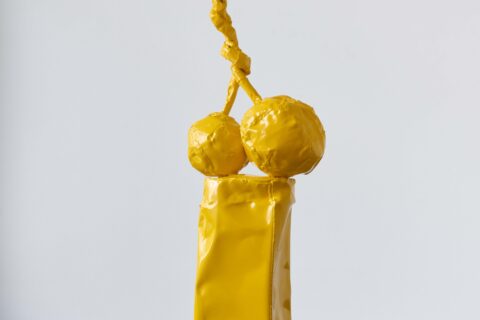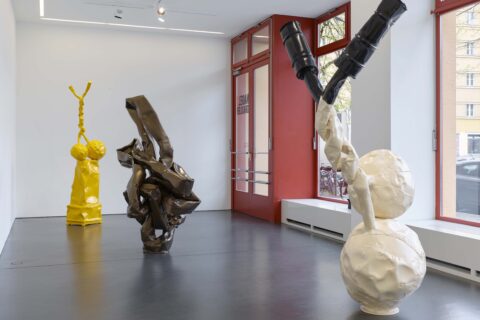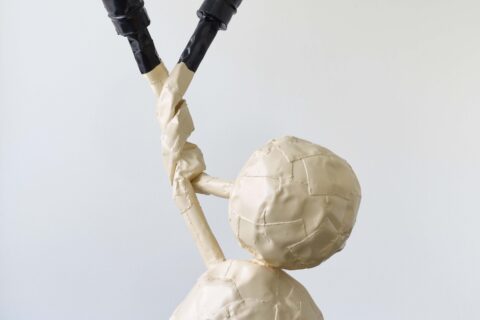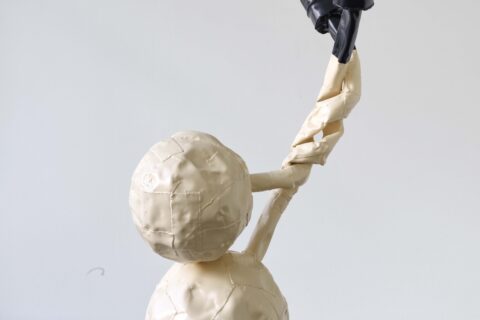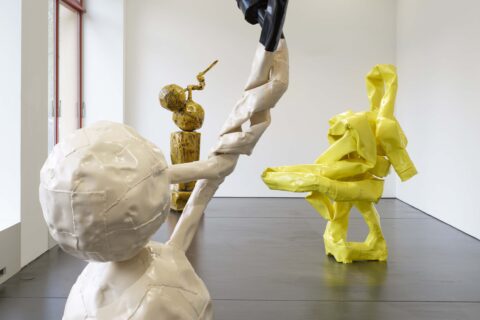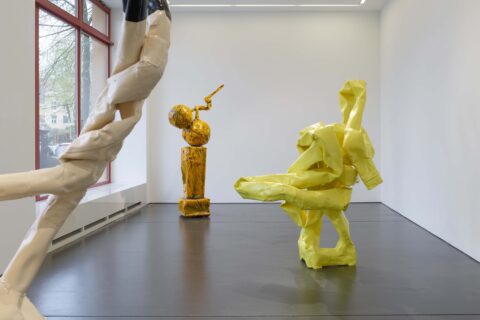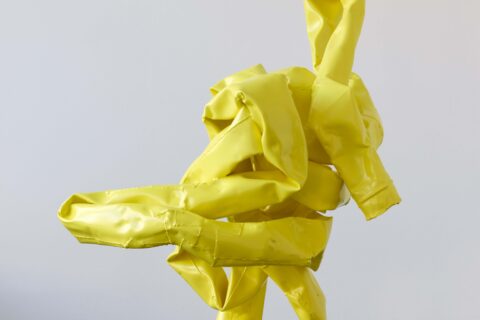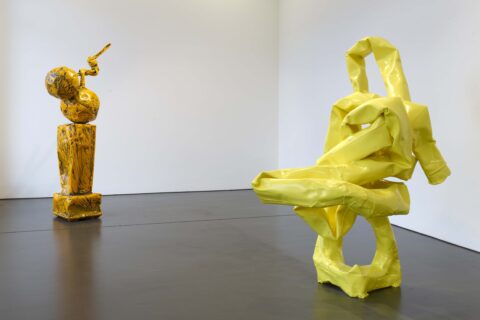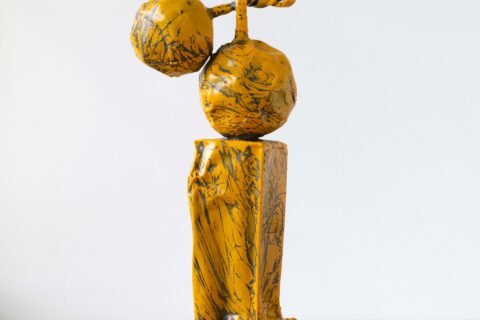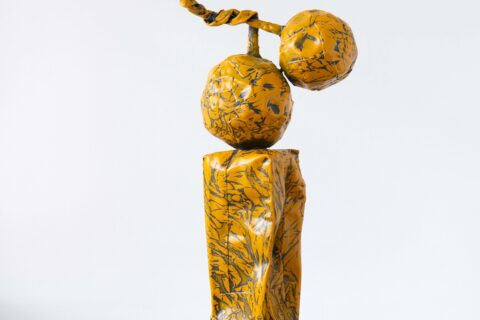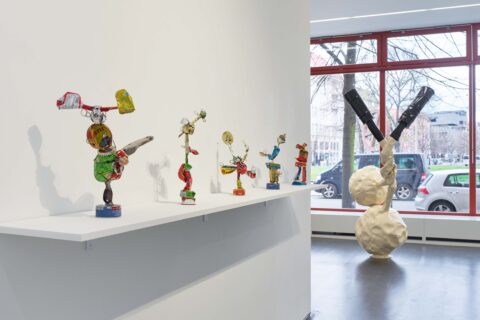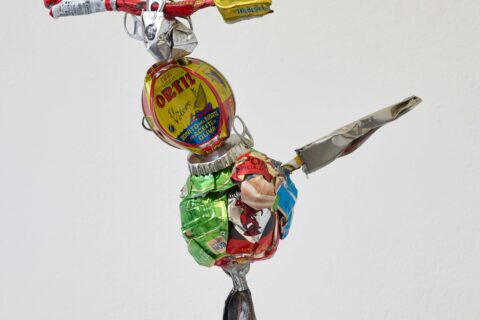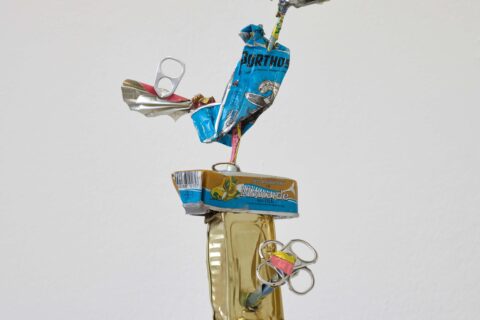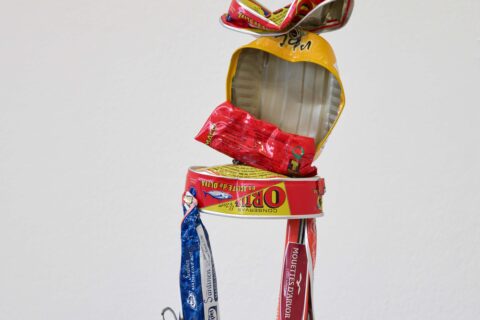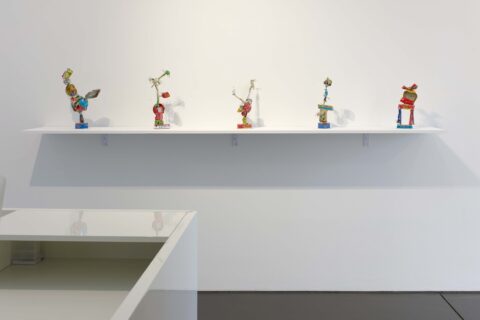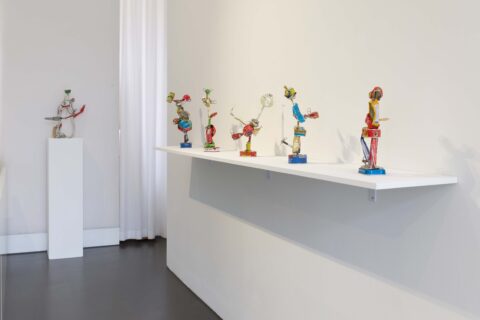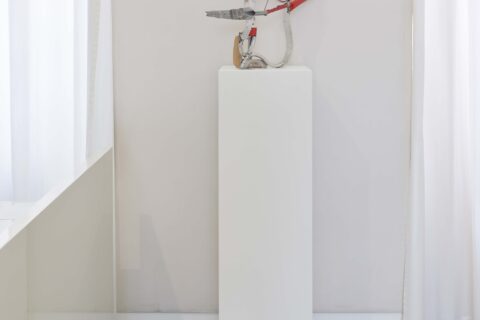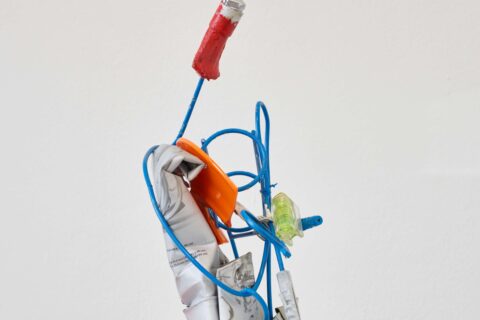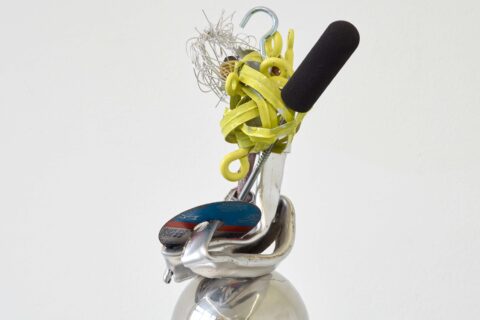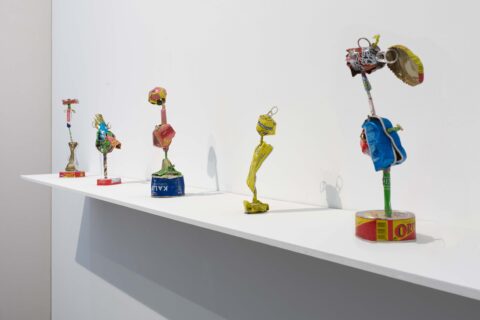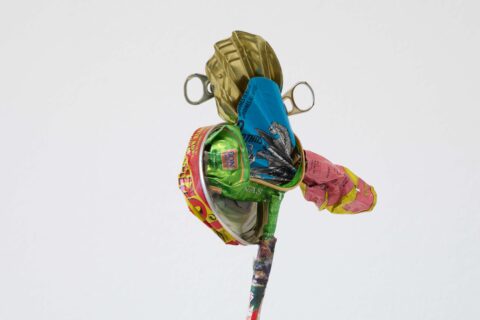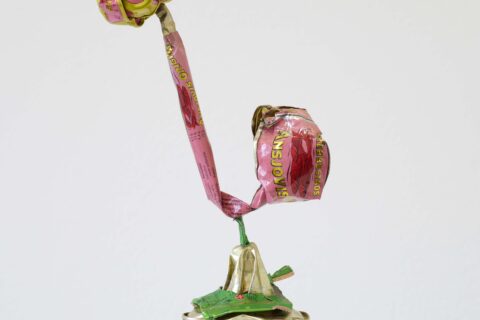Anna Fasshauer irrational tunings
29/04/2023 – 24/06/2023
Galerie Nagel Draxler
Weydingerstr. 2/4
10178 Berlin
Opening / Eröffnung:
Freitag, 28. April 2023, 18 – 21 Uhr
Friday, April 28, 2023, 6 – 9pm
Öffnungszeiten / Opening hours:
Dienstag - Freitag 11 – 18 Uhr, Samstag 12 – 18 Uhr
Tuesday - Friday 11am – 6pm, Saturday 12 – 6pm
Besondere Öffnungszeiten während des Berlin Gallery Weekends /
Special Opening hours during Berlin Gallery Weekend:
Samstag, 29. April 2023, 11 – 19 Uhr, Saturday, April 29, 2023, 11am – 7pm
Sonntag, 30. April 2023, 11 – 18 Uhr, Sunday, April 30, 2023, 11am – 6pm
Press Release
“In a process of destruction I work this material into sculptures. The destruction is taking place by ruining the original state of its flatness and straightness, by bending, bumping, denting, rolling.” (Anna Fasshauer)
“Recently there was a movement to give up plastic straws. They were damaging animals in the ocean. What would replace them? Some tried paper. Some tried uncooked pieces of tubular pasta. And some tried reusable metal straws. These fell out of favor when several unfortunate people slipped, their steel straw piercing them through the eye or some similarly soft opening. Metal penetrates us, splitting our cells and pushing our bodies aside. Fasshauer’s metal is subtler, it infiltrates us like the aluminum we rub on our flesh to keep it from sweating. Unlike an antiperspirant, which is thought to cause Alzheimer's disease, Fasshauer’s sculptures sharpen and engage our minds rather than dulling and degrading them. Everyone is familiar with the experience of crinkling up a plastic straw when they are finished using it. We twist it or bend it or roll it into a ball out of anxiety or distraction or both. Fasshauer’s Talulah Rhapsody and Straw-le-Willi appear to be the crumpled straws of an anxious god confronting an uncertain future.
When George Bataille hymned the potlach as a solution to the problem of overaccumulation he was celebrating the tradition of vast, communitarian and decidedly public sacrifice. He was not thinking of aluminum. Bataille’s faith in the redemptive power of expenditure was reflected in a lurid prose style that demonstrated indulgence as well as advocating for it. Elsewhere, John Maynard Keynes made the same point in the more desiccated harmonies of the anglophone university. Both writers saw danger in the miserly mindset inherited from previous eras of scarcity. Too much puritan guilt has the effect of pulling resources out of circulation and creating an artificial shortage that leads to crisis. The solution is to publicly destroy energy intensive things, which clears the way for new things to be made. Feasts and holidays let everyone participate in the consumption of the past and raise conscious excitement for the future. Left unaddressed, overaccumulation leads to war, which is another way of publicly annihilating precious things: people in this case, instead of goods. But the private consumption of expensive materials like aluminum combines the worst of both worlds. It is neither expensive enough to solve the problem, nor public enough to bring the community together. No wonder god is anxious. She has given her pets everything, but they would rather hoard and metastasize their fear then consume what is free and be happy. Fasshauer’s twisted aluminums grant this evaporated aspect of everyday life the possibility of recognition. She would have us feast our eyes on material destruction painted as brightly as a victim awaiting the knife. […]
Fasshauer’s aluminum sculptures look like aluminum. This feat is rarer than one might imagine, given that aluminum is the second most produced metal on earth, after iron. Jeff Koons used aluminum to look like play-doh. Liam Gillick uses it to look like steel. Claes Oldenburg uses it to look like whatever it was Oldenburg was thinking about that day. Each of these artists values aluminum the way we all do, as a substitute for heavier, less durable materials. Fasshauer […] instead draws our attention to the metal itself, in its marvelous, ubiquitous pliability. […]
Here is the lumbering, aging spirit of metal as such, at once so much more useful and so much less dangerous than it used to be. The monumental tradition of sculpture itself is a kind of slapstick with its exaggerated body language, its crudeness, its fondness for types. Previously, artists – often male – found themselves locked in a struggle to the death with the decaying monuments of a previous age. “All revolutionaries,” Camus quipped, “want to kill god and build a church.” To destroy one monument is to set up another monument to its destruction. Fasshauer steps out of this cycle. Working alongside it so as to avoid prolonging it, she does not kill the monumental tradition: she lets it die by doing slapstick instead. “Be careful of battling monuments,” Nietzsche might have said, “lest you become a monument.” Fasshauer is that rare artist who can heed this warning and make art anyway.
Excerpts from: Stephen Squibb, Black Jack or The Horror of Aluminum, 2021.
_
Anna Fasshauer (*1975 in Cologne) graduated from the Chelsea School of Art and Design in London in 2001. She has exhibited her work in group and solo shows around the world, including venues such as the Jardin des Tuileries in Paris, Kunstverein Offenburg and Kunstverein Arnsberg in Germany, and the Goethe Institute in Beirut. She lives and works in Berlin.
